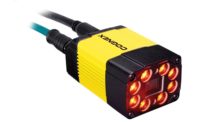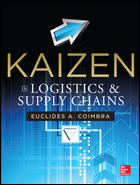
Machine vision operators have an ongoing quest for solutions that are faster, cheaper, more accurate and more robust. Source: Dalsa
Machine vision systems-which use cameras and computers for evaluation and inspection tasks that are precise, repetitive or high speed-have evolved to become a fast and reliable tool for quality control inspection. But, as with all technology, machine vision operators have an ongoing quest for solutions that are faster, cheaper, more accurate and more robust. Vision system suppliers have always designed solutions to help customers address the ever-pressing need for some combination of these elements, although trade-offs are sometimes required. When looking at how machine vision technology will evolve in coming years, all advances can be seen in the context of these four pillars.
1. Integrated Vision and Motion
Control is one issue affected by changes in machine vision technologies. Vision solutions involve looking for something and then doing something with the results. Often, this means a control function. A good example is alignment; operators look for something and then move something relative to what is found.Consider plain electronic boards before components are installed. The first task is to screen-print the solder base to pinpoint the location where components can be mounted. The board and screen must be aligned precisely before screening. The alignment system uses machine vision to identify the position of the board and screen, and then uses motion control to adjust one relative to the other.
Today’s alignment systems contain a vision board and at least one motion board with no predefined connection between vision and motion. In the future, look for vision and motion to be coupled together, available from the same supplier either as a single board or as an embedded solution, depending on the level of performance required.

EyePro uses Dalsa for bottle label inspection. Source: Eye Pro and Dalsa
2. Camera Technology
The four pillars also are reflected in changes in camera technology. As components have become smaller, the field of view of area scan cameras has decreased in order to capture the details. Unfortunately, the area that must be covered has grown larger. In many cases, the image area has grown beyond the range of a standard 640 x 480 area scan camera. The traditional options have been to: take more time, install additional cameras or buy a camera with a wider field of view.The most efficient option is to use a line scan camera. When an object is moved past one of these cameras, it captures the entire object, line by line, to build an image. This image is then fed into a frame grabber for input to the PC.
While prices change daily, line scan cameras are available for about the same or lower cost than the multiple area scan cameras that would be needed to provide the same coverage. However, the real story is the dramatic drop in complexity compared to area scan solutions.
Today, smart cameras also have reached widespread use because the technology has allowed their size to be reduced while their processing power has reached several thousand million instructions per second. Smart cameras often can be used for the same kind of applications where more complex vision systems are used, and can additionally be applied in some applications where volume, pricing or reliability constraints forbid use of bulkier devices and PCs.
3. Adaptive Software
Humans adapt to many changes easily; for example, when the shape or color of an object changes, people immediately recognize the object. However, a machine vision system facing the same situation cannot make this adjustment. The challenge is to design a vision system that readily adapts without massive programming to perform as robustly, accurately and quickly as possible.The solution is adaptive algorithms-software models that can adapt to change. The technology takes various forms, such as neural nets, artificial intelligence and geometric correlation. Adaptive algorithms can allow factory inspection to adapt to different color parts in a much more robust way, for example. Not surprisingly, there are tradeoffs: adaptive algorithms require more processing horsepower.

A vision inspection system is demonstrated at an industry trade show. Source: Dalsa
4. Human-Machine Interface (HMI)
Even though prices continue to drop, vision systems will not achieve widespread acceptance if an engineer is needed to make them work. One of the benefits of the emerging adaptive technology will be to make vision systems increasingly easy to use, putting customized high-performance solutions into the hands of operators without the cost of extended development work.This is part of an evolutionary progression that has improved operator interaction with machines. The old DOS, UNIX and proprietary operating systems each had their own unique interface that usually required a skilled programmer to operate. The move to open standards and the Windows-based common interface has made systems more friendly and intuitive for inexperienced operators. Ultimately, configuring and operating a vision system will be as easy as operating a camcorder.
The Ultimate Goal
The next step for machine vision is to accommodate custom manufacturing and one-off production-without the need to invest in programming. Even if operators have no idea which one-off characteristics will be needed tomorrow, vision system technology will be able to automatically adapt. Just as an operator physically inspecting parts does not need to be told when a new shape or color comes by, soon an elaborate programming exercise will no longer be necessary to convey the same type of information to the vision system.Manufacturing is quickly moving into a build-to-order world. Flexible quality inspection and alignment systems will soon be able to keep up with rapidly changing fabrication processes. Adaptive algorithms built into vision software will enable a new class of highly responsive image processing solutions. These advances will fulfill the need for faster performance, cheaper, more accurate and more robust vision systems in a world that just cannot wait.


